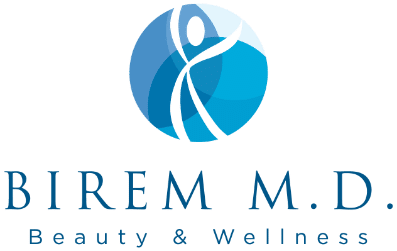Introduction
In the world of skincare and beauty, chemical peels have emerged as a powerful tool for achieving smoother, more youthful skin. These treatments, offered by reputable establishments like Birem MD, Beauty & Wellness, promise to rejuvenate your complexion by removing damaged skin layers. However, one pressing question remains for many potential patients: Are chemical peels painful, and how do you manage discomfort and downtime? In this comprehensive exploration, we delve deep into the science behind chemical peels, analyze the factors influencing pain levels and recovery times, and weigh the trade-offs between different peel depths. By the end, you’ll be equipped with the knowledge you need to make informed decisions about chemical peels.
The Science of Chemical Peels
To understand the experience of a chemical peel, it’s crucial to grasp the science behind these treatments. Chemical peels involve the application of a chemical solution to your skin. This solution contains specific acids that exfoliate the outermost layer of your skin, initiating your body’s natural healing process and promoting the growth of fresh, healthy skin cells. The extent to which the peel penetrates your skin’s layers determines its depth and, consequently, its potential benefits and drawbacks.
Factors Impacting Pain and Downtime
- Peel Depth: Peel depth plays a pivotal role in determining the level of discomfort and downtime associated with chemical peels. Superficial peels are gentler, causing minimal discomfort and requiring minimal recovery time. On the other hand, deep peels delve deeper into the skin and often lead to more pronounced pain and an extended recovery period.
- Type of Acid Used: The choice of acid in the chemical solution significantly affects the peel experience. Alpha hydroxy acids (AHAs) and beta hydroxy acids (BHAs) are known for their milder sensations compared to acids like trichloroacetic acid (TCA) or phenol, which are used in deeper peels.
- Skin Sensitivity: Personal skin sensitivity varies widely. What might be a mildly uncomfortable sensation for one person can be quite painful for another. Therefore, it’s imperative to communicate your sensitivity and pain tolerance with your skincare professional.
- Preparation and Aftercare: Proper preparation before the peel and diligent adherence to post-treatment care instructions can significantly impact discomfort levels and recovery time. This underscores the importance of a skilled skincare provider who guides you through each step of the process.
Balancing the Scales: Trade-Offs in Chemical Peels
Balancing the trade-offs between pain, downtime, and results is a crucial consideration when opting for a chemical peel:
- Superficial vs. Deep Peels: Superficial peels are less painful and require less downtime, but they may necessitate multiple sessions for optimal results. In contrast, deep peels offer more dramatic improvements but entail more discomfort and a more extended recovery period.
- Immediate Results vs. Gradual Improvement: Superficial peels typically yield immediate results with little downtime, whereas deeper peels may require patience as the skin heals and the full benefits become visible.
- Longevity of Results: Deeper peels tend to provide longer-lasting results, potentially reducing the need for frequent treatments in the future.
Challenges and Considerations
Navigating the world of chemical peels comes with its set of challenges:
- Managing Expectations: One significant challenge is managing patient expectations. It’s crucial for individuals to have a realistic understanding that some discomfort and downtime are inherent to the chemical peel process, especially for deeper peels.
- Individual Skin Needs: Different skin types and concerns may require specific types of chemical peels. Skincare professionals must carefully assess each patient’s needs to recommend the most appropriate treatment. Your provider should have a deep understanding of various skin types and tailor the peel accordingly.
- Risk Factors: Patients with certain medical conditions or a history of adverse reactions may not be suitable candidates for chemical peels. Proper screening is essential to ensure safety and minimize complications.
Making Informed Decisions
Making informed decisions about chemical peels involves several key steps:
- Consultation: Start by scheduling a consultation with a qualified skincare professional, such as those at Birem MD, Beauty & Wellness. During this consultation, discuss your skincare goals, skin type, and any specific concerns you may have.
- Pain Tolerance: Be honest about your pain tolerance and willingness to experience some discomfort in exchange for potential improvements in your skin. Your skincare professional can adjust the peel’s depth accordingly.
- Recovery Time: Consider your lifestyle and work commitments when selecting the depth of the peel. Deeper peels may require more downtime, so plan accordingly.
- Ask Questions: Don’t hesitate to ask your skincare provider questions about the procedure, potential risks, and what you can expect during and after the treatment. Being well-informed will help alleviate concerns and ensure you have realistic expectations.
The Importance of Skincare Professionals
Skincare professionals play a critical role in your chemical peel journey. Their expertise in assessing your skin’s unique needs, recommending the appropriate peel depth, and guiding you through the entire process is invaluable. Reputable establishments like Birem MD, Beauty & Wellness, prioritize your comfort, safety, and achieving your desired results.
Conclusion
In your pursuit of healthier, more radiant skin, understanding the science behind chemical peels and their associated discomfort and downtime is vital. By exploring the factors that influence these aspects, weighing the trade-offs between different peel depths, and considering individual challenges and considerations, you can make informed decisions about which chemical peel aligns best with your skincare goals and lifestyle.
Remember, the experience of a chemical peel can be a transformative step in your skincare journey when approached with knowledge and care. Consultation with a skilled skincare professional, like those at Birem MD, Beauty & Wellness, is the first step towards achieving the glowing, refreshed skin you desire while ensuring a comfortable and safe experience. Embrace the science, embrace the process, and embrace your radiant future.

